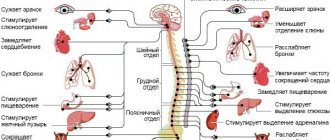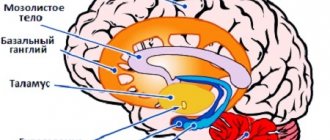Family socio-psychological characteristics
The concept of “personal social and psychological characteristics” is also applicable to a certain group, collective of people, or even a social unit, for example, a family.
It should be noted that the concept of family implies not only a generally accepted unit of a cell in modern society, but also the most ancient institution in human history
Throughout its existence, regardless of the historical era, national, political and cultural characteristics of society, the family in it goes through a certain series of stages: this is the initial formation of the family, through marriage between the future father and mother, the subsequent birth of the first child, followed by the birth of the last child and therefore the marriage of the last of the children. There is also a separate stage, often called the “empty nest” stage, which is characterized by the death of one of the spouses.
It goes without saying that family socio-psychological characteristics directly depend on the relationship between spouses, that is, the elders in the family. Of secondary importance is the peculiarity of their interactions with children, as well as the spouses’ parents, their close relatives and friends. In this case, the dominant role is played by the process of communication, as the main and unique method of information exchange. The atmosphere in the family and the relationship between husband and wife depend on the specifics of communication.
The following series of functions are identified that a full-fledged family should perform:
- An educational function that is based on the processes of socialization of the younger generation and instilling in them certain cultural and moral principles and values.
- A household and economic function, which is to most effectively maintain the health of all family members as a unit of society. Also in this case, care for children or elderly, sick people is considered.
- The economic function is the adequate use of financial and material resources, their distribution and support of disadvantaged, old or minor family members. Spiritual function. It implies spiritually rich communication, cultural development of all family members.
- A status or social function, which is based on the acceptance by all family members of certain traditional social statuses regarding their position in the family or society.
- Emotional. This function includes the need to provide any psychological or sensory support to any of the family members. Responsibility for the psychological well-being of each participant.
- Leisure function. Formation and regulation of free time for all family members. Joint recreation and free entertainment.
Structure
The structure consists of a number of elements - personality abilities, among which the following can be distinguished:
- Self-awareness. That is, she is aware of any actions and considers only herself to be the source of her life. Self-awareness is aimed at the consciousness of one’s own self, and next to this concept is self-improvement, which also plays an important role in the formation of the human essence.
- Direction characterizes its character traits, goals, directions for achieving them. Direction is the most important element and characterizes social and spiritual development. Direction is the leading element in the structure, and also allows you to get an idea of the personality as a whole.
- Temperament and character. These qualities are formed under the influence of public opinion and are also transmitted genetically. Temperament refers to certain mental properties that act as the foundation for formation. Such qualities are equally manifested in any human activity, since they are basic.
- Mental processes and states. They can be transmitted genetically, but, as a rule, they are formed throughout life.
- The abilities of the individual, as well as his inclinations, must develop continuously; it is thanks to their development that growth is supported. The abilities of any individual are acquired and are formed depending on a number of factors.
- Psychic experience. This fragment is also very important in the formation of the entity.
Thus, the structure is quite extensive and unique, each link must be fully implemented. The concept of personality is quite broad and versatile; it is characterized by such factors as temperament, behavior, abilities, and mental health. The problem of personality lies in the main points of its formation, which are associated with behavior, development, skills and abilities. Human nature is versatile and special, and the main task is to create the most comfortable conditions for further development.
Character as a psychological characteristic of personality
Definition 3
Character is a complex of stable personality traits that characterize a person’s attitude towards himself and the people around him; it is formed and strengthened under the influence of life circumstances, a person’s upbringing style and behavior.
The character of a person depends on the goals that give direction to his activities.
Orientation is a selective attitude towards reality that defines a person and influences his activities.
Attentiveness is considered a mental characteristic of orientation. Attentiveness is revealed in both involuntary and voluntary attention
When a person concentrates attention on many things, then this is involuntary attentiveness. Conscious, intentional attentiveness is an indicator of such significant strong-willed character traits as perseverance and endurance
A personality trait is a stable and unchanging pattern of behavior. They are divided into:
- leading traits that determine the manifestation of personality;
- secondary ones, which are subordinate to the leading ones or are not always detected, are less manifested.
It is the leading character traits that characterize a person’s activity and attitude towards assessing the world around him. Yet not every attitude that a person expresses speaks volumes about his character.
It is necessary to take into account circumstances and willpower when a person decides what reaction to show.
Methodology for compiling psychological characteristics
Psychological characteristics of a person are compiled by psychologists using the following methods:
- Observation. Through specially organized observation, the psychologist receives information about the characteristics of an individual’s behavior. In psychological characteristics, observation results indirectly reflect personality characteristics.
- Psychodiagnostic methods. Using personality tests and questionnaires, the psychologist determines the client’s temperament type, his interests and inclinations, and the prevailing motives for his activity. This information is the main one in the psychological characteristics.
- Sociometry. With the help of this diagnostic tool, the psychologist receives information about the socio-psychological status of the individual in the educational or work community. Sociometry allows us to identify the characteristics of a person’s interpersonal interaction with friends and colleagues.
- Interview. If sufficient information about a person cannot be obtained through tests, the psychologist develops a series of questions that he asks the client. This method of collecting information is used to clarify facts and eliminate contradictions.
Psychological characteristics begin with the listing of a person’s personal data: indicating the last name, first name and patronymic, date of birth, place of residence, reporting information about family members and characteristics of family upbringing. The following are described:
- inclinations and interests;
- personality abilities;
- characteristics of temperament and character;
- a person's attitude towards himself;
- a person's attitude towards other people;
- a person's attitude towards work.
An example of a person's psychological characteristics
Letovaltsev Andrey Yurievich
Date 04/19/2008.
Mother: Letovaltseva Anna Gennadievna.
Father: Letovaltsev Yuri Alekseevich.
Place of residence: Novodvinsk
The child is raised in a complete family. Parents take an active part in the boy's life. For Andrey, his older brother is a role model.
The boy shows interest in exact sciences and has a high level of development of logical thinking. For two years, Andrey has been attending robotics courses and participating in city and regional competitions.
The boy's level of voluntary attention is above average. There are no signs of fatigue when performing work. The pace of work is high.
The boy has a high level of visual memory development. Auditory memory is moderately developed. The dominant channel for obtaining information is visual.
The predominant motive for activity is to avoid failure. The level of anxiety corresponds to the age norm.
In the course of solving intellectual problems, Andrey demonstrates independence and rationality. Willingly comes to the aid of his comrades. Shows interest in pair work. When working in a group, he imposes his opinion on his comrades and makes many comments. He takes criticism addressed to him painfully.
In a group of peers, the boy strives to become a leader. He is ambitious and active. Andrey tries to assert himself at the expense of other children. However, in order to become a leader, the boy lacks sensitivity and attentiveness to others. In addition, the boy has high self-esteem.
Andrey has a choleric type of temperament. The young man is emotional, assertive, and purposeful. He often has conflicts in his relationships with peers. Poor development of communication skills does not allow making concessions and finding a compromise solution to controversial situations. The boy is characterized by sudden mood changes.
There are outbreaks of aggression in behavior. It is difficult for a boy to control his emotional reactions.
Based on the results of psychological diagnostics, Andrey can be recommended a course of individual sessions with a psychologist aimed at correcting the emotional-volitional sphere. The boy will also benefit from group classes in the form of training to develop communication skills.
Classification
Social and psychological phenomena of social psychology and their manifestations depend on many things. From the communities, small and large groups in which they arise.
Also on their type. Communities can be both organized and unorganized. The phenomena that arise in them are called mass-like (this will be discussed below), and the behavior is called spontaneous.
The class of psychological phenomena also matters. Phenomena can be rationally meaningful (opinion, belief, values), emotionally ordered (mood, social feelings), functioning in certain conditions (for example, in extreme or conflict situations). And of course, they can be both conscious and unconscious.
Abilities as individual psychological characteristics of a person
Definition 4
Abilities are individual psychological qualities that distinguish one person from another and are related to the effectiveness of activities.
When talking about abilities, you need to keep the following in mind:
- these are the characteristics that distinguish one person from another;
- abilities serve the effective implementation of activities;
- Abilities are characterized by the ability to transfer developed skills and abilities to a new situation.
Special abilities – abilities for established types of activities (abilities in mathematics, music, pedagogy, etc.).
General abilities are the ability to form special abilities.
Definition 5
Giftedness is a qualitatively specific combination of abilities, on which the possibility of achieving greater or lesser success in performing a particular activity depends.
The basis of abilities is made up of inclinations.
Note 3
Inclinations are natural prerequisites that seem to be a circumstance in the formation of abilities, not only in the sense that they give originality to the process of their formation, but also in the sense that, within certain limits, they can predetermine the content side and influence the degree of achievement.
The formation of abilities largely depends on the conditions that make it possible to realize inclinations.
Qualities inherent in personality
Personality is the totality of a person’s qualities. Each personality has its own unique set of qualities, there are a lot of them, sometimes one contradicts the other. So, a good-natured person may have greed in his character. He treats people around him well, but never lends money or gives expensive gifts.
Distinctive personality traits are:
- Worldview. This is a whole system of views on the world, ideas about it, values that can be realistic or illusory.
For example, a seven-year-old boy, Vasya, believes that all doctors are cruel and evil. He formed this opinion after Vasya suffered from a purulent sore throat. The doctor gave him injections for a whole week; a strong painful reaction was left in the boy’s memory for a long time.
But the worldview can change over time, so, having matured, Vasya will understand that he was mistaken about doctors in childhood.
- Character. Each person has a set of personal characteristics and qualities that determine his behavior. Character is closely related to emotionality, so excessive sensitivity can lead to touchiness, hot temper makes a person angry.
- Degree of responsibility . You can tell whether a person is serious or not by his actions. Individuals who are constantly late, fail to fulfill their obligations, promises, or refuse responsibilities are called irresponsible. A responsible person, on the contrary, strives to bring all matters to the end, keeps his word, and is responsible for his own actions. Such people are always respected and valued in society, they are entrusted with responsible tasks, and appointed to higher positions.
- Self-esteem. An individual can distinguish himself from the rest of society and evaluate his own activities, appearance, habits and other characteristics. Self-esteem is developed through the process of comparing yourself to others.
Self-esteem largely determines how society will accept a person and whether others will love him. You can notice how in the school class they tease narcissistic children who do not respect teachers and peers, considering themselves superior and much better than others. But guys with low self-esteem are also shunned; they often have few friends due to shyness and indecisiveness.
- Mental capacity . From birth, everyone has their own intellectual potential, that is, the ability to develop their minds. But a person can surpass his natural abilities thanks to perseverance, determination, and his work.
Example. Petya Ivanov has innate mathematical abilities. But he gets 4s and 3s because of laziness and unwillingness to do his homework. Sasha Sidorov is not good at mathematics, but he devotes a lot of time to extracurricular activities, and has already begun to earn his first A's.
If desired, a person can develop his memory, logical thinking, willpower and even physical abilities.
The qualities of a person’s personality are manifested and developed in the process of communication, interaction and work activity.
Social and psychological characteristics of the group
A person does not live separately from others. Sooner or later, he classifies himself as a member of a certain group - an association in which more than two people are united by interests, common goals, activities, motives, tasks, etc. A group is a single organism that includes individuals with their own socio-psychological characteristics . This, in turn, forms the characteristics of the group with its socio-psychological orientation.
Small groups play an important role in the life of every individual. Small groups are families, teams, friends, school classes or college groups. All of them include on average up to 30 people who are united by a common cause and goals, interests and views. Here there is a greater impact on each individual.
A group is a cell to which an individual is attached. One of its characteristics is the commonality on which people unite. Cohesion is the second socio-psychological characteristic.
The composition of a group is the qualitative composition, that is, the characteristics of its members. Size is the number of group members (that is, a quantitative characteristic).
In a group, two factors become important:
- Communication – its culture, manners, language, etc.
- The relationships between its members are morals and ethics, rules and norms.
Concept and tasks
In modern psychology, the concept of “social group” is a collection of individuals who have similar features, perform the same type of activity, and perceive themselves as members of a community. The group has 3 main qualities:
- mandatory interaction between participants;
- unity of goals for which the group was created;
- all members have a characteristic unique to this community.
Social psychology of groups studies the process of group formation, its types, structure and influence on the individual. The task of the industry is to assess and forecast the development of the group, identify the characteristics of interaction, and the main criteria. Throughout life, a person simultaneously belongs to several groups and often moves from one to another. This is due to a change in activity or status: for example, a schoolchild becomes a student, a worker becomes a pensioner. In this regard, we can highlight the main task of social psychology of groups - classification according to certain criteria.
The meaning of psychological characteristics in life
It is important to use psychological characteristics when determining tactics for raising children and adolescents and instilling practical skills. At the same time, it is possible to generate interest in socially useful areas that are important to society
Having an idea of a child’s predisposition to any activity, caring parents will never miss the chance to develop their child’s creative or other abilities.
The head of a company, striving to form an active workforce, must promptly take into account the individual psychological characteristics of the recruited employees and gain an idea of their mental characteristics. In such a team, correct communication connections will be formed, and common efforts will be aimed at achieving results.
History of development
Social psychology began studying groups only at the beginning of the 20th century. Previously, the object of study was the individual, not society. They examined in depth the characteristics of perception, attitudes, and interpersonal interaction, but did not try to evaluate a person as an integral part of formation.
Some psychologists completely denied the existence of groups as objects of study. This approach in social psychology was called personalistic. But in parallel with it, another way of studying developed - sociological. Its proponents argued that one cannot fully understand the motives of a person's behavior if one studies him only as an individual. A group, as an association of people, inevitably influences a person and this cannot be ignored.
The study of group processes has developed more actively in the United States. Under the leadership of K. Levin, research was carried out in the laboratory studying the dynamics, types of leadership, cohesion and other categories that determine the behavior of formations.
Already in the middle of the 20th century, personalistic and sociological psychology joined forces. This happened under the influence of government agencies interested in the emergence of new effective methods of managing industrial and military organizations. Interest in the study of various formations only increased by the end of the 20th century. Nowadays, research methods continue to expand and improve.
E. Erikson's theory of psychosocial development
E. Erikson argued that a person develops throughout his life.
From birth to death, it goes through 8 stages, each of which is accompanied by a certain crisis :
- infancy (0-1 year);
- early childhood (1-3 years);
- childhood (3-6 years);
- school age (6-12 years);
- adolescence and youth (12-20 years);
- early maturity (20-25 years);
- middle age (25-65 years);
- late maturity (after 65 years).
Every crisis can end well or negatively .
If a person successfully overcomes it, then he moves on to the next stage of life with good prerequisites for further personal development.
If the crisis is not overcome, then the transition to the next level still occurs, but unresolved problems at the new level remain with the person.
Phenomena among the masses
Society is a form of unification of people. Accordingly, such a concept as mass psyche directly relates to the topic under discussion. Other terms also follow from it. Mass consciousness, for example. It is one of the most common. Or the mass mood. We have all heard these concepts at least once.
Here, for example, are mass phenomena of the psyche. This is the name given to certain phenomena that arise, exist and develop in fairly large social groups. These are the mass sentiments. These are mental states that affect a large number of people. The prerequisites for their occurrence are usually events of a political, social, economic and even spiritual nature. Naturally, most often negative mass sentiments are most clearly manifested. Which are capable of destroying socio-political systems that have become established in society and are disgusting to it. The turbulent events of the 'nineties showed how influential sentiments can be.
What is a socio-psychological characteristic?
What is a socio-psychological characteristic? This is a set of social and psychological phenomena that explain the qualities, characteristics, properties of an individual, team, family, society, etc. Personal characteristics are determined by the psychological qualities of each component or social factors that influence it.
The characteristics of a group, family, team are determined by the psyche of each member, their relationships, common activities, religion, culture, upbringing, political situation and other factors.
Social characteristics of the family
It is better to prepare a conclusion for a child in two stages. First, the psychologist who conducted the examination processes the results of the tasks, discusses them and comes to certain conclusions about the level of development of cognitive activity, speech, emotional-volitional sphere, personality, behavior of the child and signs of originality in his development, and also decides on the nature of correctional assistance that can be provided to the child. The psychologist then formalizes the results obtained in the form of a written report. Such a conclusion is written in free form, but nevertheless, certain rules must be followed when writing it. Typically, the conclusion consists of three relatively independent parts.
The first part indicates the reasons for examining the child, the purpose of the examination, and the characteristics of the child’s behavior during the examination. Be sure to note the motivation to complete tasks, features of contact, methods of interaction with a psychologist, methods of completing tasks, the nature of the activity, reaction to encouragement, failure, remark
Particular attention should be paid to the child’s ability to use help productively, the types of this help, and the ability to transfer the solution found together with the psychologist to a similar problem. The presence or absence of verbal accompaniment of actions, the nature of statements, and the child’s ability to talk about his actions are noted.
06 Jul 2021 piterurist 4752
Personality Components
What does personality consist of? This is a multi-component complex structure. Its components are stable mental phenomena that manifest themselves in the process of activity and interaction with other people. These include abilities, temperament, character, will, emotions, motivation. Let's look at them all in detail.
Capabilities
Abilities are what determine an individual’s success in various activities.
This concept can be interpreted in different ways. On the one hand, abilities mean the peculiarities of the course of mental processes that positively affect the quality of activity. On the other hand, this is a high level of development of skills, abilities and knowledge.
There are several classifications of abilities.
By structure, abilities are divided into:
- Elementary abilities. They are associated with brain functions inherent in every person. These include, for example, the ability to distinguish colors, smells, sounds, and the ability to remember and assimilate information. They are congenital, but can be developed throughout life.
- Complex or socially determined abilities. These are abilities for some specific activity. For example, musical, sports, artistic, literary abilities. They are not innate, they develop in the process of interaction with society.
By prevalence:
- General abilities are common to all people. For example, the ability to communicate, motor abilities, aesthetic and moral activity.
- Private abilities are not common to everyone. An important role in their formation is played by inclinations: musical ear, artistic and aesthetic sense, etc.
Depending on the nature of the activity there are:
- Theoretical abilities are associated with abstract logical thinking. They reflect how well a person solves theoretical problems, operates with abstract terms, and establishes logical connections between objects and phenomena.
- Practical abilities are associated with the manipulation of specific objects in the process of activity.
All abilities complement each other and allow a person to develop harmoniously. Success in life largely depends on their implementation.
Temperament
Temperament is a set of properties of the nervous system and characteristics of the course of mental processes that determine human behavior and reactions. Temperament is an innate characteristic that does not change throughout life.
The classification of temperaments was proposed by Hippocrates in the 5th century BC. e. He divided people into sanguine, phlegmatic, choleric and melancholic. People use this classification to this day. What is each temperament type?
The main characteristics of the sanguine temperament are stability of the nervous system and extroversion. Sanguine people are active, energetic, fun people. They easily get along with people, are optimistic and active. They are distinguished by the ability to quickly adapt to changing conditions and a high level of self-regulation.
Phlegmatic people are introverts with a stable nervous system. They are cold-blooded, weakly emotional, and slowly excitable. However, when they manage to get involved in an activity, they show a high level of performance. It is difficult to adapt to new conditions and difficult to give up old habits.
Choleric temperament is characterized by instability of the nervous system and extroversion. Cholerics are quick-tempered, emotional, and impulsive. But they cool down quite quickly if they are met halfway.
Melancholic people are introverts with an unstable nervous system. These are anxious, pessimistic, vulnerable people. They are prone to constant self-examination and excessive preoccupation with their inner life.
Knowledge of temperament opens up wide possibilities for a person. Based on them, you can plan activities much more effectively. You will know your own characteristics, try to avoid potentially vulnerable situations, and interact effectively with people.
Look for tests to determine the type of temperament and highlight the predominant character traits in our selection of psychological tests.
Character
Character is a stable system of ways a person interacts with the world.
Unlike temperament, character is not an innate characteristic. It is more flexible and subject to all sorts of influences. However, it is still based on congenital characteristics, which are subsequently superimposed by environmental factors.
Individual stable patterns of human behavior in various situations are called character traits. There are three groups of such traits:
- Communicative. They manifest themselves in communication with other people. A person can be sociable or reserved, tactful or harsh, friendly or aggressive.
- Business. Characterize a person in activity. These include accuracy, diligence, hard work, carelessness, laziness and others.
- Strong-willed. They characterize a person’s ability to consciously manage his attention and direct it towards achieving a goal. These include determination, perseverance, perseverance, compliance, etc.
Also take a look at our articles about the positive and negative qualities of a person.
Will
Will is one of the most important components of personality, its core. It is willpower that determines the strength of personality. Will means the ability to manage one’s behavior, control mental states and processes.
Different motives, desires, and orientations constantly struggle within a person. The will helps us to follow those of them that at a particular moment in time are most useful and bring us closer to achieving the goal. Therefore, the will is always associated with self-restraint.
Will is not a static quantity. It can be trained like a muscle. We wrote in detail about self-discipline in the article on how to develop willpower.
Emotions
Emotions are individual experiences that arise in response to external or internal stimuli.
Humans need emotions to adapt more effectively to the environment. They play an important role in the process of interaction between people.
In psychology, it is customary to classify emotions as follows:
- Mood is a set of emotional reactions occurring at a certain point in time.
- The simplest emotions are emotions associated with the satisfaction of physiological needs.
- Affect is a violent uncontrollable outburst of emotions.
- Feelings are experiences caused by a specific object or person.
- Passion is a bright, strong and positively colored emotion that a person is unable to resist.
- Stress is a mixture of strong negative emotions with characteristic physiological reactions.
Emotions have a strong influence on a person’s perception of his own life and on other people’s perception of him. All people experience emotions differently.
Motivation
Motivation is a mental component that is responsible for motivating a person to activity. This is a set of reasons that determine human behavior.
Motivation is closely related to human needs. We can say that it is a kind of tool for satisfying needs. The more strongly a specific need is expressed, the higher the motivation for its implementation.
The operating unit of motivation is the motive. This is an internal urge that arises in response to a need and forces a person to perform certain actions.
Motivation is the main driving force of our development. Without it, a person will not be able to achieve success in life and realize his potential. Therefore, you need to treat it with care and attention.
Uniting and achieving results
This is what collaboration means. Cohesion is a process during which a specific connection is formed between people, due to which they unite into a “single organism”. Everything, again, is done to achieve certain goals and results. Each of the group members is interested in this.
It is customary to distinguish levels of cohesion. And at the first stage, the development of emotional contacts usually occurs - the manifestation of sympathy and disposition of people towards each other, for example. The second level involves the process of convincing each person that his value system coincides with others. And the third is where the common goal is shared.
All this influences the formation of the so-called socio-psychological climate in the team, which contributes to maintaining a general mood, a decent level of performance and well-being.
Personality as a social characteristic of a person.
At the present stage of development of society, the problems of managing people as individuals come to the forefront, and the organizational side of management shifts to the background and turns into a kind of background against which these problems are considered.
In management, personality means a person as a subject of active conscious activity, possessing a set of socially significant traits
. These traits, on the one hand, are formed under the influence of the natural properties of a person (nervous system, memory, feelings, emotions, perception, etc.), on the other, social properties (role, status, knowledge, experience, habits, etc. .). Each personality can be represented by such important elements as direction, ability and character.
Direction is characterized by stability in the orientation of a person’s behavior, namely in his interests, aspirations, inclinations, and ideals. In an organization, a person’s orientation can manifest itself in interaction with other employees, in solving a problem, or on oneself.
Ability is characterized by mental properties in human activity, for example, such as the type of thinking (artistic, logical, mixed), and special ones associated with a specific field of activity. It is clear that the first is laid down by nature, the second is developed in the process of education, together with the natural intelligence of man. Ability and its main component - thinking - determine the job level in the hierarchical chain of command. Thus, for employees holding low management positions (for example, foreman, timekeeper, etc.), concrete-sensitive thinking is sufficient, which can be formed by training in a short period.
Persons holding middle management positions require so-called concrete-imaginative thinking. For this, professional education is already necessary. Managers of small businesses or leading specialists require concrete, speculative thinking. This level, in addition to higher education, requires practical experience and knowledge. To manage large enterprises, abstract thinking is required, and people managing large socio-economic processes (regions, countries), in addition to all the listed types of thinking, must have foresight thinking.
Character is shown in manners
and
the type of personality behavior
determined by the reaction to external influence. It must be borne in mind that the complexity and diversity of the human personality do not fit into any typology presented. It would also be a mistake to underestimate the predisposition of each of us to any type or several joint types at the same time. Therefore, familiarization with the typology of characters allows you to more fully use your own strengths, neutralize (if possible) weaknesses, and also helps to “pick up the key” to other people, since it reveals the hidden mechanisms of human decisions and actions. The character of people gives rise to another personality trait - temperament.
Temperament is a set of individual characteristics that characterize the dynamic and emotional aspects of a person’s behavior, his activities and communication. Temperament can be divided into four most general types: choleric, sanguine, phlegmatic, melancholic.
* Choleric is a strong type of temperament, manifested in general mobility and the ability to devote oneself to a task with exceptional passion, in violent emotions, sudden mood swings, and imbalance.
* Sanguine is a strong type of temperament, characterized by mobility, high mental activity, variety of facial expressions, responsiveness and sociability, and balance.
* Phlegmatic is a strong type of temperament associated with slowness, inertia, stability in aspirations and mood, weak external expression of emotions, and a low level of mental activity.
* Melancholic is a weak type of temperament, which is characterized by slowness of movements, restraint of motor skills and speech, a low level of mental activity, slight vulnerability, a tendency to deeply experience even minor events, and a predominance of negative emotions. The type of temperament must be taken into account in specialties where work places special demands on the dynamic and emotional qualities of a person.
The listed social characteristics of an individual form three types of behavior of people in an organization: independent, neutral
and
dependent
. This suggests that for some, leadership and submission will be perceived as violence, for others - internally desirable, for others - they represent a conscious necessity.
Recognizing the importance and usefulness of this type of management activity, one should also remember that the individuality of a person’s behavior depends not only on his personal traits, but also on the situation in which his actions are carried out. Therefore, the study of a person should always be carried out in conjunction with the study of the situation.
The behavior of an individual in a social environment is largely determined not only by innate, but also acquired properties, such as disposition towards people and one’s business, values, beliefs, and principles.
This is the criterion base that a person adheres to in his behavior, and all its components are in close interaction, interpenetration and mutual influence. However, despite significant interdependence, they can be considered as relatively separate characteristics of a person’s personality that influence his behavior.
1. A person’s disposition towards people, individual processes, the environment, his work, and the organization as a whole plays a very important role in establishing normal interaction between a person and the organizational environment.
The location is characterized by the fact that it is invisible, since it is contained in a person. On the “surface” only its consequences are visible. Disposition also stems from the feelings that a person has towards an object, process or person. And finally, the location moves relative to such poles as “like” and “dislike.”
In general terms, disposition can be defined as an a priori attitude towards a person, group of people, phenomena, organizations, processes and things, which determines a positive or negative reaction to them.
2. Values, as well as disposition, have a strong influence on a person’s preferences, decisions and behavior in a team. Values set a person’s preferences according to the principle “acceptable - unacceptable”, “good - bad”, “useful - harmful”, etc. At the same time, values are quite abstract and generalizing in nature, they live an “independent” life, regardless of a specific person and are formulated in the form of commandments, statements, wisdom, general norms and may or may not be shared by individual groups of people.
Values can be defined as a set of standards and criteria that a person follows in his life. This is manifested in the fact that through an appropriate assessment of the phenomena, processes and people occurring around him, a person makes decisions and carries out his actions. Values form the core of a person's personality. They are quite stable over time and there are not many of them. Typically, values are considered as the normative basis of morality and the foundation of human behavior.
The set of values that a person follows constitutes his value system, by which others judge what he represents as a person.
3. Beliefs. Very often a person makes decisions based on assessments of phenomena or conclusions about the qualities of these phenomena. If these assessments are sufficiently stable and do not require appropriate evidence, then they turn into beliefs. In general, beliefs can be defined as stable ideas about a phenomenon, process or person that people use when perceiving them. Beliefs can change over time.
Beliefs can be divided into two large groups. The first group consists of those that describe the absolute and relative characteristics of the object of belief, which do not have an evaluative nature. The second group includes those requirements that are evaluative in nature. Beliefs have a noticeable impact on such a criterion of personal behavior as disposition.
4. Principles play a very important role in the lives of many people, since they systematically regulate their behavior. The principles are embodied in stable norms of behavior, restrictions, taboos, stable forms of reaction to phenomena, processes and people. Principles are formed on the basis of a value system; they act as a stable form of manifestation of a value system and the embodiment of beliefs in the form of certain standards of behavior.
A person performs his professional duties in the environment and in interaction with other people. He not only performs a certain role in the organization, but is also part of a small social group. Depending on the level of performance and final results, the following social groups in the organization’s workforce can be distinguished:
71.ROLE OF THE MASSES AND INDIVIDUALS IN HISTORY
one of the fundamental problems of philosophy and sociology. Pre-Marxist and modern. bourgeois sociology considers people. the masses as a passive crowd, as an object of influence of outstanding personalities. Social inequality and the exclusion of workers from participation in government management is justified by the statement that people. the masses are incapable of intellectual creativity due to their “inertia” and “backwardness.”
Marxist analysis of R. n. m. and l. in and. organically connected with the base. theoretical and methodological principles of history materialism. The decisive role of people. The masses in history are determined primarily by the fact that they are the main producers. the power of society. The class struggle of the working masses against historically determined. forms of oppression and exploitation are the driving force of development and change of antagonistic. formations; people's struggle the masses for their liberation is the main content of the story. Political and social gains, democratic. freedoms under capitalism are wrested from the rulers. classes struggle people. wt. This struggle actively influences the ideological life of society and the development of culture. The impact of people masses on society. life especially increases and manifests itself openly during turning points in history - during revolutions, national liberation. movements. “Never have the mass of the people been able to act as such an active creator of social order as during the revolution” (V.I. Lenin, Soch., vol. 9, p. 93).
The influence of the broadest people. the influence of the masses on the progress of culture manifests itself in diverse forms, both directly and indirectly. The basis of any spiritual culture - language - was created by the people. by the masses. People's Treasury creativity is a constant nourishment. environment of genuine art. The greatest creations of art and literature are truly folk, they reflect current societies. Problems. In the development of natural science and technology plays an important role in the generalization of production. experience of the masses The sciences of society develop on the basis of a generalization of data from societies. practice will liberate. struggle of the masses.
At the same time, Marxism does not diminish the role of outstanding personalities in history. Only on the basis of scientific understanding the decisive role of people. masses in history, the role of classes and class struggle can correctly reveal the meaning of historical. individuals, leaders of certain classes, parties, societies. figures, outstanding scientists, literary and artistic figures. Great thinkers and artists have a huge influence on the course of cultural development of society. But the artist’s creativity turns into empty flower if it does not reflect the contradictions and needs of reality and is not rooted in the life of the people.
When studying the role of the individual in history, one should distinguish between historical categories. and a great personality. A person can be called historical if his name is associated with major historical events. events and the region left their mark on these events. At the same time, it is not yet taken into account in which direction - progressive or reactionary - a given person acts. But not every historical the personality is great. A great personality is one whose activities accelerated the progressive natural course of societies. process. No class can come to power without putting forward its own politicians. leaders, leaders. Each society The era and each class have their own methods of formation, education and promotion of leaders, organization of leaders and leadership, relationships between leaders, class and masses. Ideologists and leaders of the exploiting classes strive to rise above the masses and their elected bodies, to command the masses. The leaders of the working class, on the contrary, express the fundamental interests of the working masses. The founders of Marxism-Leninism deeply believed in reason and creativity. the forces of the people resolutely opposed the cult of political personality. leader.
The nature and forms of creativity of people. masses are always historically determined. Marxism, firstly, takes into account historical. conditions of development and position of the masses in different eras; secondly, it requires clarification of the relationship between people. masses, classes, parties and their leaders in relation to each stage of society. development.
Research by R. n. m. and l. in and. associated with the study of the dialectics of objective and subjective factors of societies. development. In this case, it is necessary to understand the nature of societies. forces that ensure the operation of the law of the determining role of material production; study of the structure and role of those class forces that transform the objective capabilities of societies. progress in reality. If, when considering the problem in the first aspect, the concept of “nar. masses" is equivalent to the concept of "working classes", then consideration of the problem in the second aspect reveals a historically specific role in the development and change of each formation of the definition. social groups, classes that make up the people. In class politics struggle the concept of "people" masses" is no longer associated only with the creators of material wealth, but embraces all social forces, which at this stage are historical. development objectively contribute to the progressive development of society.
Temperament as a psychological characteristic of personality
Definition 2
Temperament is a complex of psychodynamic properties of an individual, which are revealed in the characteristics of his mental activity.
Temperament seems to be the natural basis for the manifestation of psychological qualities of an individual.
The first typology of temperaments was formed by the ancient Greek physician Hippocrates, who characterized them depending on which fluid dominates in the human body.
- phlegmatic - balanced, strong, the type of nervous system is inert;
- sanguine - balanced, strong, type of nervous system is mobile;
- choleric - unbalanced, strong, type of nervous system is mobile;
- melancholic - the type of nervous system is weak.
The key psychological characteristics of temperament include:
- sensitivity (sensitivity), which reveals the picture of what the smallest force of external actions causes reactions in the individual’s psyche and what is the speed of this reaction;
- reactivity, demonstrating the level and intensity of an individual’s involuntary reactions to external and internal stimuli (threat, criticism, etc.);
- activity, which determines the level of performance, energy of an individual in activity, his ability to overcome obstacles, perseverance, focus, concentration on activity, etc.;
- the relationship between activity and reactivity, which reveals a picture of what the individual’s activity depends on - random internal and external factors, moods, random events or consciously set goals, life plans, aspirations, etc.;
- the pace of reactions, which determines the speed of movements, actions, speed of speech, speed of mental operations, etc.;
- extroversion;
- introversion;
- plasticity, which determines the ease of a person’s adaptation to unexpected and new circumstances, flexibility of behavior;
- rigidity, demonstrating an individual’s predisposition to inert behavior, ingrained stereotypes and habits of life, and manifestations of inertia.
Note 2
Thus, temperament belongs to the so-called genotypic aspects of personality, depends entirely on hereditary factors and does not change throughout life.
Psychological structure of personality
In psychology, the personality structure includes its main characteristics:
- Biological features. These include: the type of nervous system and its properties, the relationship between the processes of excitation and inhibition in it, and the performance of the brain.
- Individual typological qualities. This block is determined by the characteristics of family upbringing and the type of parent-child relationships.
- Character traits that appear in the process of socialization of an individual. The determining factors for the formation of this element of the personal structure are the child’s socio-psychological status in the group of peers, the level of development of his communication skills, and stress resistance.
- Human life experience. It is often understood as an individual’s adaptive abilities, flexibility, ability to analyze one’s actions, and make independent decisions.
The concept of "Family"
Definition 1
The family is the basic unit of society, a social institution characterized by voluntary marriage, common life, and marital relations.
Man is a social being, therefore he always strives to be part of a group. Few people can derive pleasure from solitude, so people build close connections with other people. This circumstance is determined by the structure of the human psyche at the level of instincts. Thus, family is one of the ways to be with someone in this world.
Human ancestors, as scientists say, lived in large communities in which families gradually began to appear. Over time, the primitive family changed its organization, acquired new conditions of existence, and internal responsibilities.
Modern scientific trends interpret the definition of family differently; sociologists, for example, understand family as an association of several people related by blood or who have legitimized their relationship in the registry office. In their opinion, a family is a husband and wife. Moreover, a young couple, together with their parents and children, is also called a family.
In jurisprudence, a family is people who are officially married and live together.
Note 1
Combining these definitions, we can say that a family is a separate unit of society, confirmed at the state level, connected by a common way of life, similar goals, interests and worldview.
The family has its own characteristics:
- registered relationship between a man and a woman;
- living together and living together;
- jointly acquired material assets;
- close intimate relationships;
- joint children (spouses without children are also considered a family).
The family performs important functions and, above all, the birth of children in marriage, which ensures continuation of the family. Together, husband and wife create and accumulate material wealth, run a common household, which makes it possible to achieve a higher standard of living.
The educational function is very important; parents must instill moral values in their children and teach them the rules of life in society. For the first time in the family, a little person learns what is good and what is bad, learns kindness, justice, responsibility, learns to appreciate support and provide it himself.
The family passes on accumulated cultural values and family traditions to the child, thereby ensuring a connection between generations.
Note 2
The human psyche contains the desire to love and be loved, and if these important needs in the family are not met, the person suffers greatly.
The structure of modern social psychology
The socio-psychological structure depends on the areas of human activity, objects and research methods. One type of joint venture structure is as follows:
- SP of the individual;
- psychology of communication and relationships (interpersonal interactions);
- psychology of small groups;
- SP between groups (intergroup interaction);
- psychology of social phenomena and large public groups.
By the way! The course and nature of any of the listed types of interaction depend on the characteristics of human activity.
JV structure
Changes in the government system, internal politics and difficulties in the labor market have caused many citizens to feel a sense of uselessness and lack of demand. Consultation with a social psychologist is one of the steps to solve an individual problem with social adaptation.
Social and psychological characteristics of personality
Definition 1
A person is a conscious and active person who has the opportunity to independently choose the most suitable lifestyle for him.
Each personality has certain qualities (psychological and personal), which must be correctly understood and taken into account when interacting with a person.
The main personality traits are:
- temperament,
- direction,
- capabilities,
- character.
The personality of each person, as a member of a certain society, is influenced by the sphere of various relationships that develop in the process of human activity, consumption of material goods and personal development. That is, the process of formation of a person’s personality is directly influenced by political, social, economic and ideological factors.
It is especially necessary to note the influence on the psychology of personality of relationships between people within a certain social group, under the conditions in which a person exists. This is due to the fact that in the process of communication and interaction there is a mutual influence of one person on another, as a result of which a community is formed in social attitudes and views, as well as other attitudes towards work, society, people and one’s qualities.
Being in a group, a person occupies a certain status and gains authority among other members of the group, occupies a certain social position and plays roles in accordance with it.
Note 1
Thus, a person is not only an object of certain social relationships, but is also a subject of these relationships, acting as an active connecting link.
The process of formation and development of personality is associated with various factors, the main of which are:
- originality and individuality of human higher nervous activity;
- anatomical and physiological characteristics of a person;
- sphere of human activity;
- natural-geographical environment and society in which people exist;
- microenvironment and macroenvironment of the individual’s existence;
- socially useful activity, in the conditions of which the most important qualities of a person’s personality are formed and developed;
What is personality
The concept of personality characterizes a person as a being endowed with consciousness, using it in the process of communication, intellectual activity, work, and interaction in society. A person has a unique character, exhibits an active life position, is aware of his actions and accepts responsibility for them.
There are no identical personalities, since each person has his own life experience, mental characteristics, congenital and acquired qualities. You might think that animals are also different from each other, but this does not make them individuals. After all, a person is a part of human society, performing certain functions in it, playing its roles.
Many people wonder at what age does a person become an individual? But there is no exact answer; everyone goes through this process individually, at their own time. We can talk about the beginning of personality formation if the child separates himself from the people around him and understands his place among family members and relatives. Then he begins to compare himself with his peers, other children. Thus, personality gradually develops from childhood.
This is interesting! Children under 1 year of age are not able to distinguish themselves in the mirror. They watch with interest the reflection that appears, but still cannot understand that it is themselves. Often the baby tries to look behind the back of the mirror, wanting to find another child there. But from 12-16 months, children already establish a connection between themselves and the emerging reflection. This is one of their first “steps” towards self-knowledge and development of themselves as individuals.
Personalities can be very different: positive and negative, developed and backward, sincere, mean, benevolent and others. It all depends on a set of individual qualities that are formed from early childhood.
Family characteristics: features, rules of composition and sample
- Physical and emotional development of the child. This is the defining role of the family, which in the early stages of development cannot be replaced by educational institutions.
- Formation of psychological gender. This usually occurs in the first three years of a child's life. It is believed that it is the father who tends to differentiate differences between the sexes more strongly. Therefore, the characteristics of an incomplete family determine that the child may have problems with sexual socialization in the future.
- Child's mental development. American researchers have found that the IQ of children from prosperous and disadvantaged children differs significantly. Accordingly, this same parameter affects cultural development.
- Mastering social norms.
- Formation of value orientations. This applies to family relationships, lifestyle, aspirations and goals, communication with others.
- Social and psychological support. It is the family that lays in the child’s mind the level of self-respect, self-esteem, as well as the desire for self-realization.
Description of family structure. It should be quite short and to the point. Attention should be paid to the security, stability, openness, and spirituality of the family
It is also important to understand and describe the roles within a given unit of society, as well as the hierarchy. Description of the psychological climate To do this, you will have to work on determining the psychotype of each family member. The report should contain their description, as well as conclusions about compatibility. Parental position
We are talking about describing the lifestyle of adult family members, their social status, and type of activity. If possible, it is worth mentioning their life goals and ways to achieve them. The child's position in the family. Determining the degree of trust in parents and other adult family members, the presence of goals and aspirations appropriate to age, the presence of ideas about self-realization, academic success, state of physical and mental health.
Types
In modern science, it is customary to distinguish the following social personality types from the point of view of value orientations inherent in individuals:
- Traditionalists . For them, law-abidingness, diligence, discipline and responsibility come first. Similar traits are observed against the background of a lack of desire for self-realization and independence.
- Idealists . They are the exact opposite of traditionalists. They strive to prove themselves and act in accordance with their own attitudes and principles. They do not recognize authorities and traditional views on issues.
- Frustrated type . These people do not feel involved in public life or in making important public decisions. They are characterized by low self-esteem, a constant state of depression and passivity.
- Realists .
Such individuals competently combine the desire for self-realization with an awareness of a sense of duty. They are able to rationally approach problems and objectively assess the proposed circumstances. - Hedonistic materialists. They are typical consumers who strive for immediate pleasures without thinking about the future. Their own desires always come first for them.
Personality types:
Brief description of the socio-psychological situation in the family
Groups differ in the structure and nature of the relationships that exist directly between its members, in size, in subjective composition, qualitative features of values, rules and norms of relationships that are shared by participants, interpersonal relationships, content and goals of activity. The composition of a group, which is characterized precisely by its members, is called composition. And size is the quantitative composition, i.e. composition is a quality composition.
At primary school age, children develop certain formations - voluntary behavior. At this age, the child becomes more independent. He begins to absorb certain moral values and tries to follow specific rules and laws. Often this can be associated with selfish needs, for example, attracting attention and approval from adults. Thus, the behavior of younger schoolchildren comes down to one dominant property - the motive for achieving success. It is necessary to assess whether the child is able to make an adequate assessment of his actions, whether he is able to overcome his desires. At this age, the child tends to actively think about his actions and hide personal experiences.











